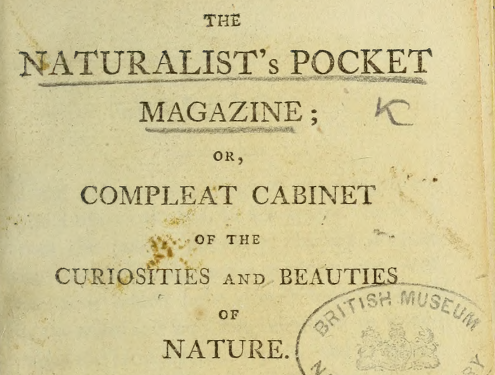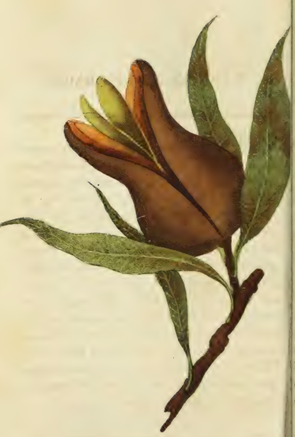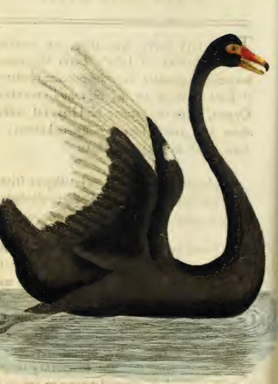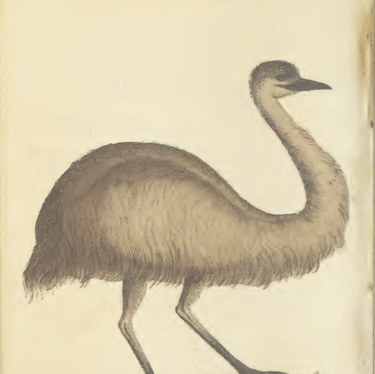Wild Swans and Tame Emus
Close reading of the text accompanying a collection of natural history drawings published in London between 1798 and 1803, strongly suggests that the owner was David Collins, the Governors’ official secretary from 1788 to 1796. In the commentary he provided for some of these artworks, Collins told stories about the early settlement that are not otherwise known.
Gary L. Sturgess
12/12/20247 min read
The Naturalist’s Pocket Magazine
A Brisbane historian, Kevin Lambkin, recently approached the author, inquiring whether he could assist in identifying the First Fleet gentleman who owned a collection of botanical drawings published in ‘The Naturalist’s Pocket Magazine’ in London between 1798 and 1803.
A close reading of the notes accompanying the illustrations in the magazine revealed that the gentleman in question had arrived with the First Fleet and remained for around ten years. He had returned to England by January or February 1798, when the first of the issues was published, and he was in ‘a highly respectable official capacity’ in the colony, in an ‘official department’.
There was only one First Fleet gentleman who remained in the settlement for close to a decade and went home shortly before February 1798 – David Collins, the colonial secretary, who arrived in January 1788, and returned to England in July 1797, six months before the series started. While Collins was not in New South Wales for ten years, he was away from England for that time. He was a marine officer but occupied senior civil positions throughout his years in the colony.
Collins’ Account of the English Colony in NSW, published in 1798, included landscapes and drawings of Aboriginal groups, but it was not previously known that he had commissioned an artist (who was not a botanist) to go ‘out into the woods of that country. . . to sketch whatever he might find new or beautiful’. The identity of this artist is presently unknown, and while the convict artist Thomas Watling made the original drawings used in Collins’ book, the ones published in the ‘Naturalist’s Pocket Magazine’ are not obviously in his style. (Qualification is necessary because we do not know how faithfully the engraver reproduced the originals.)
Some of the drawings arrived with explanatory text written across the bottom, but the majority were unaccompanied by any notes. In several cases, however, Collins gave the editors a verbal description or told stories about the animal, bird or plant in question, which were published in the magazine.
My interest here is not the natural history, which Mr Lambkin will continue to pursue, but three previously unknown anecdotes about the early settlement.


Surviving in the Bush
From shortly after they came ashore on the 27th of January 1788, some of the convicts would disappear into the bush, hoping to live off the land and avoid the necessity of having to work for government. The problem was sufficiently serious that the Governor, Arthur Phillip, mentioned it in his lecture to the assembled prisoners following his swearing-in ceremony on the 7th of February. As the surgeon George Worgan reported it:
'He observed likewise that many of them, since they had been disembarked, instead of assisting in the necessary Work of forming the Settlement, were found skulking in the Woods, and came to the Camp only at the appointed times for the serving of their Provisions. . .' [1]
Skulkers who attempted to stay out for any length of time would generally return in a state of desperation – so, when Edward Corbett fled into the woods in the winter of 1788 after having been caught stealing, he found it impossible to survive, giving himself up three weeks later almost starved, even though he knew that he might well be executed. Even if escapees could find fruit or greens to eat, there was the danger that they might be poisoned: the indigenous inhabitants knew when to eat particular foods and how to prepare them so they were edible.
The following anecdote, provided by Collins while he was talking about the fruit of the banksia, does not appear anywhere else, and must refer to the period immediately after their first arrival:
'Many people in New South Wales, we are assured, were at first sight of it much deceived; for, finding it hanging in clusters on the trees, and probably feeling no disinclination to food of almost any kind, they congratulated each other, that the woods were furnished with a fruit which promised to gratify the taste with something like what they were fond of in their own country: but, on hastily knocking them off the branches, and eagerly applying their teeth to them, they quickly found that there was less likelihood of losing their appetites, than their teeth themselves, on the occasion since nothing but the almost iron bill of the cockatoo, or parrot, could possibly find any thing eatable in them.' [2]


Discovering the Black Swan
The black swan, a legendary creature in classical literature, was first discovered in mid-April 1788, on an expedition led by the Governor to a northerly branch of Port Jackson known today as Middle Harbour. William Bradley, 1st Lieutenant of HMS Sirius, who was a member of this party, did not mention the swan in his relatively brief account. Until now, Phillip’s Voyage, published in London in 1789, was the only source known to have mentioned the encounter:
'On this lake they first observed a black swan. . . This was a very noble bird, larger than the common swan, and equally beautiful in form. On being shot at, it rose and discovered that its wings were edged with white: the bill was tinged with red'. [3]
This particular engraving was not based on a drawing from Collins’ collection, but on one made by an unidentified artist known today as the ‘Port Jackson Painter’, which was sent back to England by the First Fleet surgeon John White and published in 1792. But the publishers of the ‘Naturalist’s Pocket Magazine’ wanted a black swan in their collection, and they were able to incorporate some original comments by Collins who, they said, ‘was probably one of the party alluded to’.
Given how close Collins was to Phillip, his remarks might have been based on stories told by the Governor on his return from the expedition, but the highly visual language used in Collin’s account makes it more likely that they were his own recollections of that day:
'. . . this stately bird was first seen, swimming erect, and undismayed at their approach, in a small creek that led to some waters which are found between Port Jackson and Broken Bay. Its appearance was so grand and novel, that the temporary surprise which succeeded, allowed it time to get on the wing, and escape unhurt'. [4]
Another of these birds was shot several weeks later, and Major Ross sent home a stuffed specimen with the returning First Fleet transports. The officers and gentlemen would continue to come across swans (and shoot them) on their excursions into the countryside between Port Jackson and Broken Bay, and the following passage suggests that Collins developed a real fondness for them:
'These birds have been seen in great numbers, in the lagoons, or ponds, which lay between the two harbours abovementioned; where, among the thick sedges which skirt the borders of them, they deposit their eggs, and hatch their young. The feathers of these continue, for some time after they are produced, of a very light brown.
'Those who amused themselves with shooting these birds, found the parents an easy prey when attended by their young: for nothing could induce them to quit them, though fired at from every direction and themselves frequently wounded, while their offspring had life. The same affection has been noticed between the male and female birds.'
Engraving of a black swan from the magazine, based on a drawing by the ‘Port Jackson Painter’ and sent to England by John White


A Tame Emu
Europeans had been aware of the Australian emu since the late 17th century, a Dutch expedition having discovered one on the west coast of New Holland. The Port Jackson settlers first encountered them in early March 1788 when the Governor’s game-killer brought a bird he had shot into the camp. The skin of this particular bird, preserved in spirits, was sent to the Home Secretary in July and given to the naturalist, Sir Joseph Banks.
The first live emus seem to have arrived in England on HMS Buffalo in late 1801. They were described as seven feet high with greyish brown plumage, and extremely docile.[5] But the European residents of NSW had long since had tame birds living among them, and the editors of the magazine reported Collins’ comments about the young ‘cassowary’ (as they called it) portrayed in his collection of drawings:
'The bird, of which the annexed engraving is a correct representation, was taken alive, and carried into the settlement at Port Jackson, about six months before the drawing of it was made; at which time, the subject appeared to be about eight or nine months old.
'In full grown birds, the colour of the feathers is much darker than in the young ones. They are very swift of foot, when pursued; and have been known to strike severely with the heel. When standing erect, they have actually measured full seven feet in height; and, from Mr. Collins's Account of the English Colony in New South Wales, lately published, it appears that a female, which had been killed, was found to contain exactly fifty eggs. . .
'The flesh of the Cassowary of New South Wales is coarse; but it has often proved, to the writer of this sketch, when in that country, a welcome and delicious meal. . .
'The natives name this bird Ma-ray-ong. That from which the drawing is made, soon grew exceedingly domestic; fed in common with fowls, &c. in the yard; and ran, whenever it heard itself called by its owner.
'To the above genuine and original particulars, for which we are indebted to an ingenious friend, may be added what has been said by the few writers on natural history who have yet noticed this beautiful bird.' [6]
____________
[1] George Bouchier Worgan, Letters Written to Richard Worgan, 12-18 June 1788, in Worgan Collection, State Library of NSW, Safe 1/114.
[2] ‘Banksia Pyriformis’, The Naturalist’s Pocket Magazine, Issue XIII, London, 1798.
[3] Anonymous, The Voyage of Governor Phillip to Botany Bay, London: John Stockdale, 1789, p. 98.
[4] ‘The Black Swan’, The Naturalist’s Pocket Magazine, Issue XV, London, 1798.
[5] Hampshire Chronicle, 14 December 1801, p. 3.
[6] ‘The Cassowary’, The Naturalist’s Pocket Magazine, Issue XII, 1798.


Contact us
Connect with us
Botany Baymen acknowledges the traditional custodians of country throughout Australia and respects their connection to land, water and community.
© Botany Baymen 2024. All rights reserved.
You may download, display, print and reproduce this content for your personal or non-commercial use but only in an unaltered form and with the copyright acknowledged.

